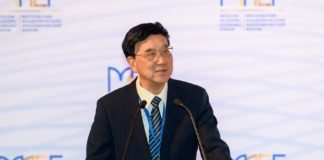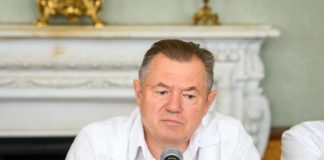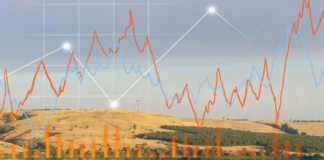In 2022, the Russian economy had to urgently adapt to a new geopolitical reality and a change in the architecture of international relations. RF managed to maintain an acceptable economic situation under unprecedented sanctions and political pressure. At the same time, some sectors of the economy have been growing since the beginning of the year. Participants of the Abalkin Readings scientific forum discussed how not only to reduce losses, but also to give impetus to the growth of the Russian economy.
Based on the materials of the scientific forum «Abalkin Readings», September 14, 2022
Alexander Alexandrovich Shirov,
Member of the Board of the VEO of Russia, Director of the Institute for Economic Forecasting of the Russian Academy of Sciences, Corresponding Member of the Russian Academy of Sciences, Doctor of Economics, professor
I am glad that we are discussing our latest report within the Free Economic Society. This is the work of a large number of employees of the Institute, in which Andrey Nikolaevich Klepach took part as the head of the VEB Institute, as well as our colleagues from the Center for Macroeconomic Analysis and Short-term Forecasting.
We are in a situation now where there are forks in economic policy. It is clear that economic policy is not a science, and here we always have the possibility of certain changes, redirection of resources to solve certain problems. In the conditions in which our economy now finds itself, this is not an opportunity, but a necessity. The Russian economy has four key areas in which it can develop.
The first is the external economic environment. It is clear that we can build the role of the Russian economy in the world economy in different ways. We are talking about exports, imports, financing of foreign economic activity, reserves (because we understand that the currencies of reserve countries have become toxic for us, and something needs to be done about this).
Technologies and the situation in the real sector are of the same importance. Now these two areas are inseparable from each other, because, of course, we have fundamental, applied science, we have engineering, but one way or another, the transformation of scientific and technological policy will determine the results of the Russian economy structure. At the same time, there are structural shifts not only in the production system, but above all (this is very important) in incomes and prices, because this means that all the flows of financial resources, incomes of the economy will be significantly changed. And, of course, stimulation of investment activity is indespensable, without which these structural changes and the implementation of scientific and technological policy become impossible.
Another area is social policy. There is nothing to say here, since we can judge the effectiveness of any economic policy by the change in the quality and standard of living of the population. It is impossible to imagine a successful economic policy when our level of quality of life is low.
And finally, spatial development. Russia is a huge country with great differentiation in basic development indicators, and it is clear that if the restrictions on spatial development are not lifted, then all efforts in other areas may be significantly insufficient.
Monetary and budgetary policy in the areas listed above must be structured in such a way that Russia passes key forks in economic policy to achieve a definite result in the end. This means that these goals set the requirements for monetary and budgetary policy, and so on. Our view is that we have all the tools of both budgetary policy and monetary policy in order to solve development goals, and the question is how to configure them.
Of course, the period after the events of late February posed the question how should the government act? It is clear that there was a period of «putting out fires», which lasted approximately until the beginning of summer, and then the question arose about how to choose the direction of economic policy for the future. We need economic strategy even under these unstable conditions. It’s impossible to go without this. And we must pay tribute to the government because they went in this direction despite all limitations. Strategic sessions that were held by the government throughout the summer and early autumn dedicated to various areas of economic development including economic development strategies, are, in my opinion, moving in the right direction. For the first time in many years they said that this should be done. And one way or another, we saw some signs of movement in this direction.
The problem is when we talk about how the mechanisms of economic management are arranged, then we have three key levels. The first is macroeconomic, and it is clear that the Central Bank and the Ministry of Finance work at this level which determines the parameters of monetary and budgetary policy. The second is the project level, which is handled by the federal executive authorities. Everyone likes him very much. Everyone loves to work in project logic. Moreover, a significant part of the government members are people who came from business or were somehow connected with the implementation of such projects, and, in fact, everything is built there quite well. We have one problem: how to connect this project level with the level of decisions in the field of macroeconomic regular policy? And here, of course, the main thing is the final economic effect. It can be considered in different ways, depending on what our economic policy priorities are. It is possible to calculate economic effects through indicators like GDP, their redistribution is also important. It can be considered through social effects, when we must understand how this all affects the key goals of economic development.
Understanding how the entire set of these tools, these projects affect the overall development of the economy, requires an understanding of the level of intersectoral interactions, interactions between the largest sectors of the economy. In order to build this work, we need an understanding of the potential for economic growth. Actually, this is why we believe that this first step that we have taken should be the basis, on which to take the next step, that is, to analyze which economic policy allows us to realize this potential to the greatest extent. This is what all the work is about.
When it comes to potential, we pay attention first of all to the key fundamental limitations of economic development, and the main one for us, of course, is the limitation associated with human potential i.e. population size, labor force, and so on. What do we have here?
First. There is a lot of talk about the fact that in the field of demography we are witnessing some kind of catastrophe, but not in the sense that things are very bad, but in the sense that this is simply an insurmountable obstacle to the development of the Russian economy. I would be quite careful in this regard. Of course, there is a challenge in terms of demographic development, and it is associated with the aging population, the high mortality rate, and the fact that everything has deteriorated very much as a result of the pandemic crisis. But if we look at the key indicators of the limitations of strictly speaking economic development, population size is something that prudent economic policy is capable of overcoming.
As for the aging of the population: the burden on working citizens from the unemployed in the most dramatic scenarios of population change (a drop to 135 or even 130 million people) still does not exceed the levels that the Russian economy already saw in the early 2000s.
Second. These levels are still significantly lower than what we are now seeing in the economies of developing countries, including those of Eastern Europe.
And finally, the most important thing is that if we remember the factor of labor productivity growth, then we will understand that the current level of pressure on the employed population will not actually grow. This means that there is pressure, of course, but mainly it comes in the sense that we have to restructure social policy. We will have less loading of the economy by young citizens and more by the elderly. Budget policy should take this into account, including from the point of view of the development of social infrastructure.
The main saving reserve for the population in our country is, of course, the reduction in mortality. Are there any reserves? Huge. If we look at the difference in life expectancy between Moscow and Russia on average for the main causes of death, we see that the difference is 1.8 years due to external death causes. This means that it is necessary to develop the road network in the country, it is necessary to fight against illegal alcohol and everything that is connected with external causes.
The second reason is heart disease. It is clear that the work that has been done in recent years, including in the capital, has led to a significant improvement in results here. The rest of Russia is still lagging behind. These areas of increasing life expectancy by reducing mortality are very easy to fit into budget policy, showing what needs to be developed in the regions in order to reduce mortality.
As for other factors in maintaining the population, these are primarily the birth rate, and secondarily, migration. Fertility, of course, requires sustainable economic growth. In addition, this factor does not mean a strong contribution to maintaining the population. As for migration, the exhaustion of the possibility of involving new countries in migration to our country, we believe that this factor can be considered neutral in the medium and long term. Therefore, once again: from the point of view of demographics, economic growth is not strongly limited. But everything that we understand about the development of human capital, the development of education, healthcare, needs to be done. There are a lot of difficult directions here, but if the policy is built correctly, we can overcome the restrictions.
Now, let’s talk about the efficiency of our economy. Estimates of the potential for change in efficiency indicate that, in a sense, the economic dynamics in our country have reached the upper limit. Our economy is significantly behind the leading developed countries in terms of both material intensity and productivity of the use of primary resources, that is, some amount of additional income can be obtained by reducing the use of primary resources.
This reflects the quality of the technologies used. If we approach the assessment from this point of view, then in the near medium term, it is possible to obtain dynamics of up to 5% in some years. But it will require an extremely high level of investment activity. And this is a limitation, because both we at the institute and our colleagues have repeatedly shown that there is an exchange between the accumulation of fixed capital and household consumption. Resources flow from one area to another, as they are limited in the economy, and even more so now, in the current conditions. Restrictions on increasing investment are now also associated with technological limitations.
Assessing the current state of production potential, it is widely believed that in our economy a significant part of the capacities is still represented by Soviet factories, equipment, and so on. But in fact, the share of the old Soviet capital is already insignificant. This means that most of what we now have is the capacity introduced after 2000. A significant part was introduced after 2010. These are modern powers. And if so, these capacities, of course, can be used both in terms of import substitution and in terms of their loading to increase the satisfaction of growing demand.
The largest share of these modern capacities belongs to areas whith the highest turnover of capital. This is the food industry, the production of building materials, even engineering. In fact, one can rely on these capacities, because the level of capacity use is low. Therefore, the old discussion about whether we have the potential to increase production at current capacities does not make sense, because such potential exists. The old capacities are almost gone. This is where you need to start.
It is clear that the satisfaction of demand in our economy, where 50% of GDP is generated by household consumption, is determined to a large extent by the capacity of the consumer market and the ability of the population to consume the most complex products. We know that, for example, the backlog in both housing and durable goods, such as cars, is very high. In order to get closer to those indicators that at least countries comparable to us in terms of economic development have, we can increase demand in these sectors by about 4-5% or even more.
But what prevents this? The primitive structure of household consumption in our country. The vast majority of the expenses of half of Russian households are for food and mandatory payments. This is due to both the prevailing price structure and the underlying low level of income. Accordingly, changes in this area, of course, should be an element of the strategy.
In general, one of the forks in economic policy (not economic development, but economic policy) is how to increase incomes. The first version is that we must act through investments, that is, first we increase investments, then production increases, then incomes increase, and in the end we get a result. The second version is that we can act through the incomes of the population. It is impossible to follow any of the paths 100%. But the second direction, or growth through an increase in the income of the population, in my opinion, should not be denied either, because an analysis of production capacities and what we see in the structure of consumption just shows that consumption needs to be corrected in some way.
The demand for household appliances, cars, goods that determine the quality of life, fell during the crisis, under the influence of restrictions that have developed in our economy. The demand for food remained unchanged. This means that the structure of inefficient consumption of the population has further aggravated. That is, this trap which means that we cannot even ensure the loading of capacities oriented to consumer demand must be somehow overcome.
We talked a lot at the Moscow Academic Economic Forum about the costs of research and development. The problem is not only that, as a result of the sanctions, we have some kind of limitation on financial resources, but that they cut Russia off from the majority, more than 75% of the results in research and development. Approximately half of the research and development costs that our country has are the costs of imported research and development results. Accordingly, either we will replace this import from unfriendly countries with our own costs, our own solutions in the field of research and development, or results from friendly countries, or the technological gap that we already have will increase. Therefore, from a long-term perspective, spending on research and development is becoming a key growth driver. And here the main question is: what is the science and technology policy? How are we trying to fill this gap and how will we implement new research? How will it be institutionalized? And here the question arises: what are the key areas? These are all questions for the new science and technology policy.
And, finally, we see that in some years the economy can grow by about 5%. If we take into account the limitations of the economy associated with both sanctions pressure and the impossibility of an endless increase in investment in fixed assets, then this forecast is 3% or slightly more. It is important that a significant contribution to this growth, especially in the longer term after 2030, is prognosed by a qualitative component, which consists in increasing production efficiency, reducing the use of primary resources, reducing material intensity, energy intensity, and so on. Approximately 40% of this growth may be done by the qualitative component. And it directly depends on technological shifts. We are talking about agriculture, composite materials, public transport, and digitalization. Everything that is talked about so much can be quantified. The question is to understand the limit of the potential of technology change and their impact on economic dynamics.
Some conclusions. The main thing is that before the events that took place this year, we had opportunities for growth, albeit not high, which, on average, is determined by slightly higher growth rates of the world economy. Of course, growth potential is a thing that changes over time. Under the influence of the sanctions that have hit us, short-term and medium-term economic growth has declined. But ultimately, the medium- and long-term potential for economic growth that we have will be determined by the results of the implementation of the strategy that the government is currently developing. We see certain problems both with the formation of a medium-term forecast and with the formation of a draft law on the federal budget. In a sense, this is the result of these discussions. But one way or another, in the near future we will finally be able to analyze how economic policy is changing, to what extent it corresponds to the realization of the potential that our economy has.



